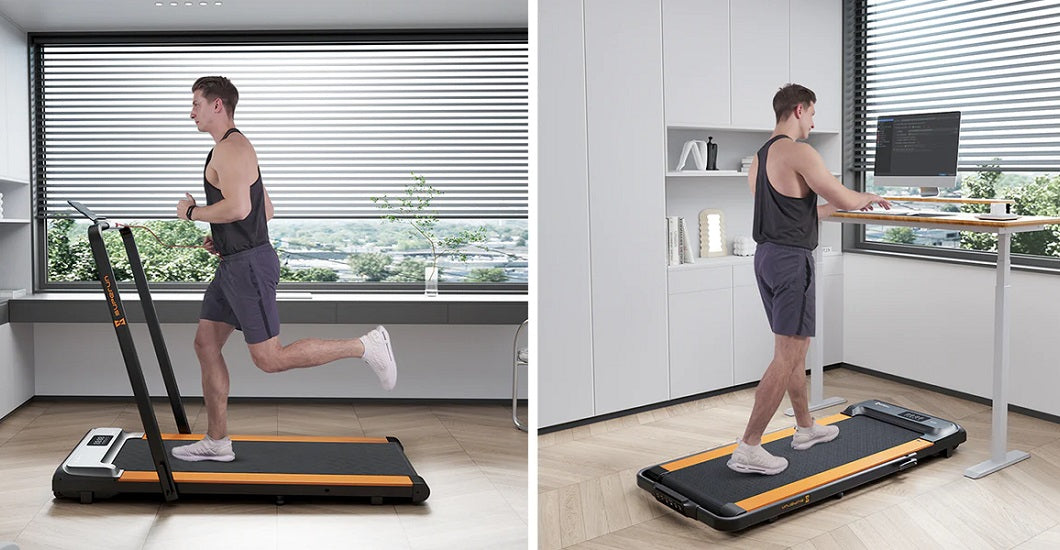Running is not just an aerobic exercise; it's a precise blend of rhythm, endurance, and distance mastery. For those who like running, the question "How many steps in a mile when running?" holds significant relevance. Understanding this fundamental aspect of running not only unveils the science behind each stride but also serves as a compass for runners, guiding them toward their fitness goals and optimizing their training routines. In today's article, we will dive into the intricacies of step counting in a mile, unveiling its importance, the factors that influence it, and how it shapes the world of running for enthusiasts of all levels. Whether you're an experienced marathoner or just starting on your running journey, running outside, or running on a treadmill. the answer to this seemingly simple question will open a door to a deeper understanding of your sport and your capabilities.
How Many Steps In A Mile When Running?
The number of steps in a mile when running varies from person to person based on factors such as stride length, running speed, and terrain. However, a rough estimate for an average adult running at a moderate pace on flat terrain is around 2,000 steps per mile.
To calculate the exact number of steps for a specific individual, you can use the following formula:
Steps per Mile = 5,280 feet (1 mile) / Stride Length (in feet)
Measure your stride length by taking several steps and measuring the distance covered.
Divide 5,280 (the number of feet in a mile) by your stride length to find the number of steps per mile for you.
Keep in mind that your stride length may vary based on factors like your running speed and the terrain you're running on. When running faster, your stride length typically increases, and on uphill terrain, it may decrease. Therefore, understanding your stride length and making adjustments based on your running conditions can help you calculate a more accurate number of steps in a mile when running.

Benefits of Daily Running
Running is one of a effective aerobic exercise to help people change the sedentary lifestyle. Certainly! Here's a list of benefits associated with daily running:- Cardiovascular Health
- Weight Management
- Muscle Strength and Tone
- Improved Endurance
- Bone Health
- Mental Health Benefits
- Enhanced Respiratory Function
- Improved Sleep Quality
- Boosted Immune System
- Strengthened Joints and Connective Tissues
- Increased Metabolism
- Social Benefits
- Improved Cognitive Function
- Enhanced Discipline and Mental Toughness
- Enjoyment of Nature
It's important to note that while running offers numerous benefits, it's crucial to start gradually, listen to the body, and incorporate rest days to prevent overtraining and reduce the risk of injuries.
How to Track Your Miles?
SupeRun smart treadmills with LED display have the real-time viewing of sports data. At the same time, runners also can link to the fitness app - PitPat to track their miles.

Factors Affecting the Number of Steps in a Mile
Stride Length
- Definition of Stride Length
Stride length refers to the distance covered with each step while running, typically measured from the point of initial contact of one foot to the next contact of the same foot.
- How does Stride Length vary among Individuals?
Individuals have different natural stride lengths influenced by factors such as body proportions, flexibility, and running experience.
The biomechanics of running play a crucial role in determining an individual's unique stride length.
- Impact of Leg Length on Stride Length
Longer leg lengths generally result in longer stride lengths.
The relationship between leg length and stride length is a key factor in understanding how individuals differ in their running mechanics.
Running Speed
- Influence of Running Pace on Step Count
The faster a runner's pace, the longer each stride tends to be.
When running at a slower pace, runners take more steps to cover the same distance compared to running at a faster pace.
- Formula to Calculate Steps per Mile Based on Speed
There is a direct correlation between running speed and the number of steps required to complete a mile.
A simple formula can be used to calculate steps per mile based on speed, helping runners gauge their pace and set goals accordingly.
Running Terrain
- Effects of Terrain (e.g., Uphill, Downhill, Flat) on Step Count
Different terrains pose unique challenges to runners and affect their stride length and step count.
Uphill terrain generally shortens stride length and increases step count, as runners exert more effort against gravity.
Downhill terrain often lengthens stride length and reduces step count, as gravity aids in propulsion.
Flat terrain allows for a more consistent stride length and step count.
- Adjustments Needed for Different Terrains
Runners need to adapt their stride and step count when transitioning between terrains to maintain an efficient and comfortable running rhythm.
Proper training on varied terrains can improve a runner's ability to adjust stride length and step count to match the terrain, optimizing performance.
Understanding these factors provides runners with valuable insights into their running mechanics and allows for better control over their pace and efficiency, whether they are tackling a hilly trail, sprinting on a track, or running a flat road.

Techniques For Improving Stride Length
Improving your stride length can significantly enhance your running performance and reduce the risk of injury. Here are techniques for achieving this:
Stretching and Flexibility Exercises:
- Dynamic Stretching:
Incorporate dynamic stretching routines before your run. This includes leg swings, hip circles, and walking lunges. Dynamic stretching helps improve the range of motion in your joints and muscles, which can lead to longer strides.
- Static Stretching:
After your run, perform static stretching exercises for your hip flexors, hamstrings, quadriceps, and calves. These stretches can help prevent muscle tightness and improve flexibility, allowing for a more extended stride.
- Yoga and Pilates:
Consider practicing yoga or Pilates regularly to improve overall flexibility, balance, and posture, which can positively impact your running stride.
Strength Training for Leg Muscles:
- Squats:
Incorporate squats into your strength training routine to strengthen your quadriceps, hamstrings, and glutes. Strong leg muscles can generate more power, allowing for a longer stride.
- Lunges:
Lunges work with various leg muscles and can help improve stride length. Ensure proper form and gradually increase the resistance or weight as you progress.
- Plyometrics:
Plyometric exercises like box jumps and bounding drills can enhance your explosive leg power, which can translate to a more extended stride.
- Resistance Bands:
Use resistance bands for exercises like leg abductions and adductions to target specific muscles that play a role in your stride.
Maintaining a Comfortable and Efficient Stride:
- Focus on Cadence:
Aiming for an optimal cadence (stride turnover rate) can indirectly lead to a more extended stride. Aim for around 170-180 steps per minute, as higher cadence can reduce overstriding.
- Running Form:
Pay attention to your running form. Maintain an upright posture, engage your core, and avoid overstriding (landing too far in front of your body). Instead, aim for a midfoot strike directly beneath your center of mass.
- Run Tall and Relaxed:
Imagine a string pulling you up from the crown of your head. Running tall with a relaxed upper body can help maintain a smoother, more efficient stride.
- Practice Strides:
Incorporate strides or accelerations into your training. These short bursts of faster running can help reinforce a longer, more efficient stride.
Remember that improving your stride length takes time and consistent effort. Gradually integrate these techniques into your training routine and consult with a coach or physical therapist for personalized guidance. Additionally, listen to your body and avoid pushing yourself too hard to prevent injury.
Conclusion
In the world of running, the question of "How many steps in a mile when running?" serves as a fundamental yet intriguing metric. It is a reflection of the intricate interplay between your stride, speed, and the terrain beneath your feet.
We delved into the factors affecting step count, such as stride length, running speed, and terrain. We learned how these variables influence each other and discovered techniques for enhancing stride length, including flexibility exercises, strength training, and maintaining an efficient and comfortable stride.
Hope you can run better and happier.






Leave a comment
All comments are moderated before being published.
This site is protected by hCaptcha and the hCaptcha Privacy Policy and Terms of Service apply.